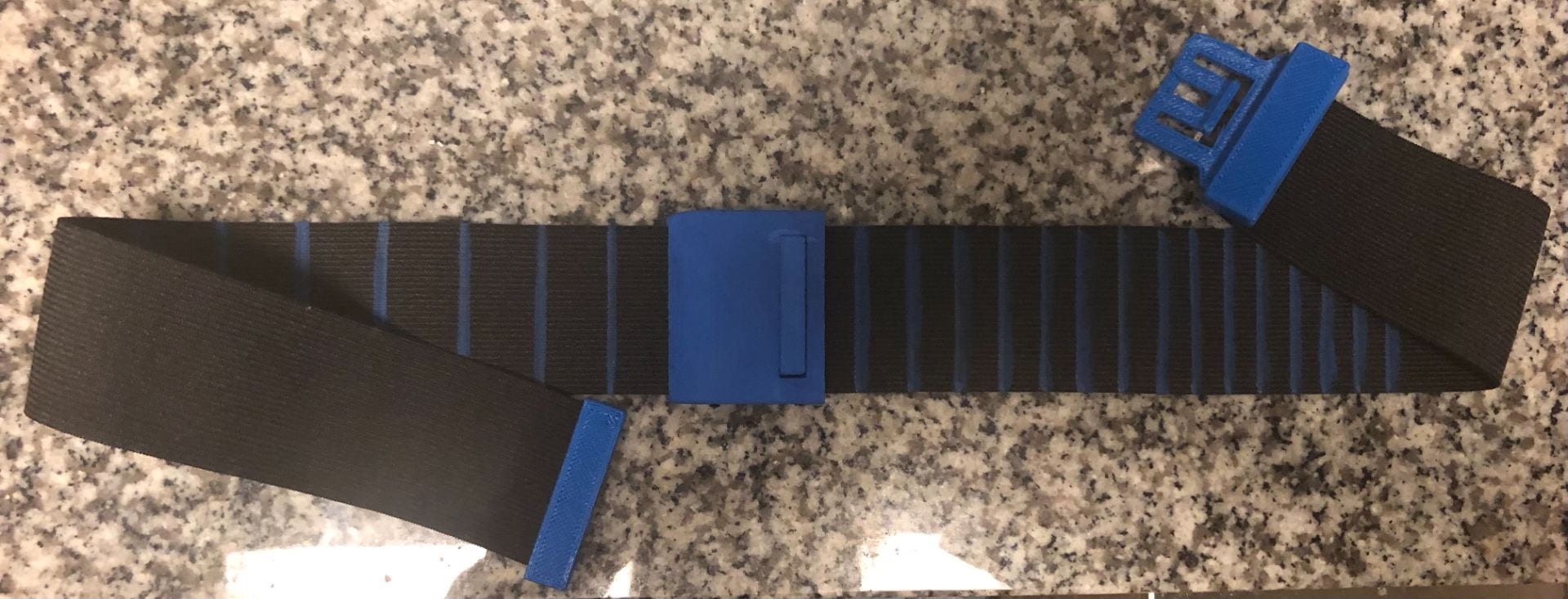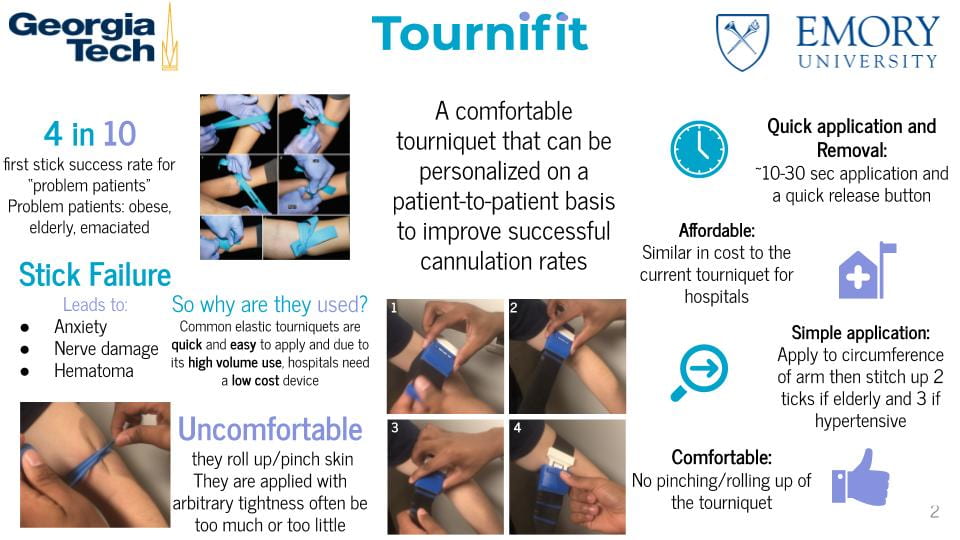Tournifit
Tourniquet that applies appropriate pressure to the brachium based on physique and cardiovascular health, increasing venipuncture stick accuracy.
Prototype of the Tournifit, a tourniquet designed for use in venipuncture, that utilizes an intuitive and experimentally tested marking system ensuring the optimal pressure is applied to the patient’s arm for maximum venous engorgement. The Tournifit was made by 3D printing the buckle pieces in PLA and then utilizing a strap that is 28% Rubber and 72% polyester, with the markings sized out and painted on.



